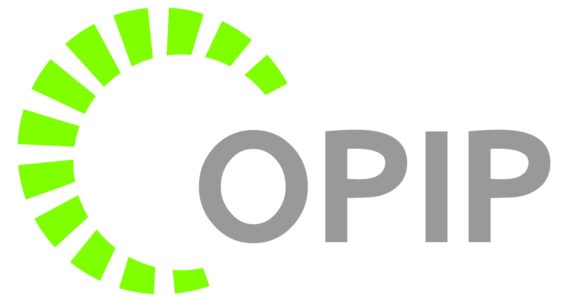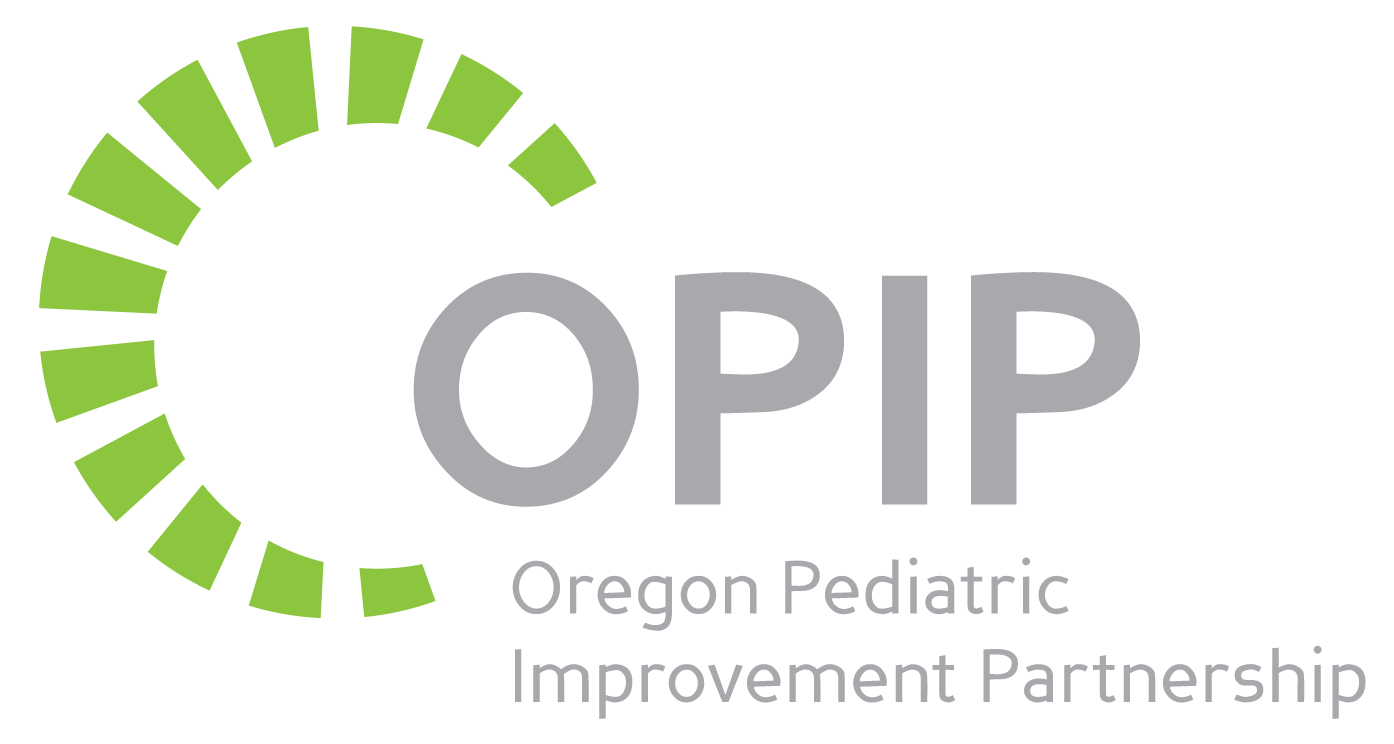Supporting Quality Efforts with Maintenance of Certification (MOC)
The Oregon Pediatric Improvement Partnership (OPIP) is an ABMS Multi-Specialty Portfolio Approval Program™ (Portfolio Program). Click here to read the February 2016 press release for OPIP’s MOC activities.
Through this designation, OPIP is able to provide Part IV Maintenance of Certification (MOC) credit to board certified providers (whose boards are within ABMS) that meaningfully participate in eligible OPIP projects. Eligible projects include those projects for which OPIP has funding to provide improvement facilitation and measurement support in a way that is aligned with MOC Part IV project requirements.
OPIP QI initiatives engage healthcare providers from the OHSU system, along with health systems and primary care providers from across the state who are focused on improving care for children. Given this broad focus and desire to provide MOC Part IV improvement credit to the range of physicians that serve children including pediatricians, family medicine, and prenatal physicians (including OB GYNs), OPIP became an ABMS Portfolio Program which includes the member boards representing these various kinds of physicians. To date, OPIP’s MOC-eligible projects have engaged over 200 providers and impacted care for over 150,000 children.
How can I get Part IV Credit through the OPIP ABMS Portfolio Based at OHSU?
- If you are not at OHSU: Currently Part IV MOC credit is only provided to providers who are meaningfully engaged in grant-funded, eligible projects that OPIP is leading. All current OPIP projects are closed to physician recruitment. However, if you are interested in being placed on a list of potentially interested physicians to participate in future projects, please contact opip@ohsu.edu and we can reach out when new opportunities become available.
- If you are at OHSU: Currently Part IV MOC credit is provided for eligible projects conducted within the Department of Pediatrics and approved by the Quality Medical Director. OHSU also provides MOC support through the Continuing Professional Development (CPD) program (contact: Liane Giles LeBlanc).
What are examples of OPIP improvement initiatives that have provided MOC Part IV credit?
- Improving the level and quality of medical home services for children: The Enhancing Child Health in Oregon (ECHO) Medical Home Learning Collaborative (LC) supported pediatric and family medicine practices to improve their ability to be a medical home for all children, and to better meet the needs of children and youth with special health care needs specifically. Additionally, the project assisted practices in attaining Patient Centered Primary Care Home (PCPCH) recognition from the Oregon Health Authority, through submission of the Oregon PCPCH attestation form (also a tool in which offices report about systems and processes). The project’s three aim statements were to: 1) improve practices’ scores on the T-CHIC Medical Home Office Report Tool (MHORT) by 10% by the end of the 2.5 year project; 2) improve and maintain practices’ PCPCH recognition status from unrecognized (no tier) to an enhanced Tier (either Tier 2 or Tier 3) by the end of the 2.5 year project; and 3) improve the practices’ adaptive reserve by 10% by the end of the 2.5 year project.
- Improving the Transition of Care for Children with Serious Infections from the Inpatient to Outpatient Setting through the Outpatient Parenteral Antibiotic Therapy Program (OPAT): The Division of Infectious Diseases within the OHSU Department of Pediatrics established a quality improvement project composed of five physicians within the Division who self-selected their participation in this project. To ensure clarity among these physicians as to the quality gaps, the project team developed a flow chart to describe the current workflow for patients receiving parenteral antibiotics in the outpatient setting, the quality issues associated with the components of this workflow, and the providers and teams associated with components of this workflow. The aims of this project were to: 1) Improve medication safety by documenting prescribed antibiotics in a pediatric specific manner (mg/kg) for 90% of patients in the patient population (an increase of 65% from Baseline), and ensuring that the documented inpatient dose continues to match the outpatient dose (as it did for 89% of patients in the patient population at Baseline); 2)Ensure medication safety by documenting and monitoring the ordered and conducted laboratory tests both prior to and after discharge for 90% of patients in the patient population (an increase of 4% from Baseline), so as to identify potential drug side effects and adverse reactions; 3) Improve communication of orders from the inpatient to the outpatient setting by including clear documentation of the start and stop date for treatment, the appropriate infectious disease follow-up to be conducted, and the education that is to be provided to families regarding the implications of receiving outpatient-administered IV antibiotics, for 90% of patients in the patient population (an increase of 32% from Baseline for follow-ups conducted, and 82% from Baseline for education provided).
- Engaged and Meaningful Use of Patient Experience of Care Surveys Collaborative: The use of patient experience of care surveys is a component of national (NCQA) and local accreditation standards for medical home (Oregon’s Patient Centered Primary Care Home certification standards). Additionally, the use of quality data to inform quality improvement is also component of national medical home standards. Lastly, meaningful partnership and engagement with patients in quality improvement is also component of medical home standards. This project supported practices to meaningfully use the CAHPS® CG PCMH. The project had three aims:
- To improve the percentage of engagement tools used by the practice staff related to the Consumer Assessment of Healthcare Providers and Systems – Clinician and Group – Patient Centered Medical Home (CAHPS® CG PCMH) by 50% from baseline over the course of the one-year project. Practices were supported to improve their engagement with patients by being provided a number of OPIP-developed engagement tools that could be used BEFORE, DURING, and AFTER survey administration.
- To use patient experience of care data to identify and implement quality improvement opportunities by the end of the one-year project, across 100% of the practices. General collection of surveys and use of the data are key process elements within Medical Home standards such as NCQA PCMH and the Oregon-specific standards, called the Patient Centered Primary Care Home (PCPCH) standards. Practices were measured on this activity according to the practice facilitator reports of QI activities developed and according their specific attestations within the PCPCH standards as they relate to USE of the CAHPS data.
- To improve the level and quality of Patient Centered Medical Home services and processes, as measured by Oregon’s Patient Centered Primary Care Home (PCPCH) Program, by 10% over the course of the one-year project. Quality improvement activities were focused on areas of need identified in the survey that also mapped to specific processes within the PCPCH. Practices were measured on progress towards these goals by tracking improvements in the PCPCH scores and attesting to new processes/systems as part of their quality improvement work. By the end of the project, the goal was for practices to improve their baseline PCPCH scores by 10% on the PCPCH Standards related to the specific areas of need identified in the survey.
- Oregon Transforming Pediatrics for Early Childhood (OR-TPEC) As part of the four year (2022-2026) cooperative agreement funded by the Health Resources and Services Administration (HRSA) and Maternal Child Health Bureau (MCHB), OPIP is implementing a high-fidelity Learning Collaborative. This Learning Collaborative is comprised of four diverse primary care pilot sites in the Portland Metro area- Hillsboro Pediatrics, Virginia Garcia Memorial Health Center (Cornelius Site), Randall Pediatrics Clinic, and Metropolitan Pediatrics (Johnson Creek Site). The aims of the quality improvement project are to:
- Improve the early childhood development office systems and processes specific to care for children birth to five by at least 10% in each site. Early childhood development office systems and processes are measured using an attestation tool developed by the OPIP team that is based on the Patient Centered Primary Care Home measurement program tool, called the Patient Centered Primary Care Home Office Systems and Processes Specific to Early Childhood Development (PCPCH-ECD). This tool is collected by an OPIP facilitator in site visits.
- Improve the provision of specific early childhood development services, specifically the number of children birth to five who received 1) issue-focused interventions from staff with Early Childhood Development (ECD) expertise, 2) care coordination and system navigation support, 3) who were referred to or connected to Specialty Behavioral Health. The project improvement goal is for each site to improve in the number of children birth to five who received each child-level metric by at least 5% by the end of the cooperative agreement in 2026.
- Quality improvement activities include semi-annual Learning Sessions where sites identify a targeted action plan to improve a specific office system and process and child-level metrics, monthly site visits from an OPIP facilitator to support quality improvement implementation of the action plans, and quarterly tailored curriculum calls on improvement strategies.

